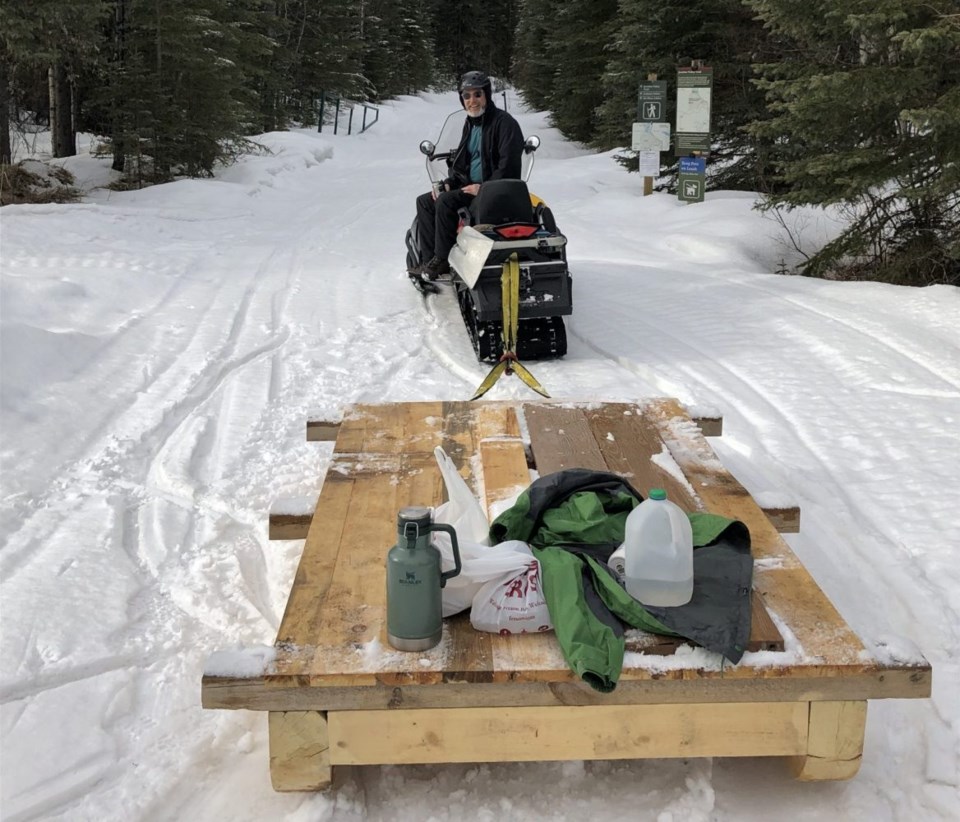Scott Hayes | [email protected]
Local Journalism Initiative Reporter
If more campsites is your thing, then you may be just as excited as Todd Loewen is.
Alberta's minister of Forestry and Parks says that being responsible for bringing more than 900 new campsites and several new locations for comfort camping greatly appeals to him as much as he knows it appeals to Albertans. "Parks are for people," he says.
The bitter irony for him is that his job frequently precludes the possibility that he can escape to the great outdoors. He admitted that he's only managed to get away for a few nights this year so far.
"I'm hoping to do a lot more this summer yet, but it seems like there's always lots of work to do that gets in the way of being able to enjoy some time in the outdoors," he said.
"I do plan on spending some time because I do really want to tour some of the parks in Alberta and just see firsthand what people are experiencing so that I know when I get comments and positive and negative feedback and all, I know where it's coming from."
Those camping opportunities are just a small part of his platform commitments as set forth in the mandate letter that Premier Danielle Smith delivered to him just last week. They are the only items that indicate a timeline as well. He has 10 years to fulfill on those pledges.
The other items on the platform include:
- investing an additional $5 million in trail upgrades for Kananaskis Country and building new trails and campgrounds across Alberta;
- enabling the expansion of trails, campsites, and other public land use opportunities by Alberta entrepreneurs and other organizations;
- bringing stakeholders together to develop a Crown lands recreation and conservation strategy to expand public access while protecting natural spaces; and
- Working with the minister of Treasury Board and Finance and minister of Jobs, Economy and Trade to develop an incentive program for the forestry industry that is similar to the Agri-Processing Investment Tax Credit.
That last item regarding the forestry industry was actually first on the list in the mandate letter.
Loewen says that it's a tricky balance to manage the economic demands of industry with the recreational interests of the public at large.
"Alberta always has multiple things going on: we have the oil and gas; we have forestry; we've got agriculture; we have recreation; we've got fishing and hunting. There's lots of different things going on in the landscape at any given time, and it is a bit about balancing it all up together to make sure that we can get the job done on all fronts."
The forestry incentive program is like an investment tax credit, he explained, which is very popular and works well for job creation.
"And then but, of course, we do have a booming tourism industry that I think we need to protect and make sure it's alive and well, too. With that, we need to be able to make sure that when we get people here that they have things to do and places to see so that they can return again to see more or tell their friends and family to come and visit Alberta, too."
The way he sees it, they aren't necessarily mutually-exclusive fields. They can serve each other. He hopes to direct his ministry so that it can partner with entrepreneurs and organizations and other stakeholders to facilitate the development of opportunities for both industry and recreation.
Furthermore, he wants to do more recreation and conservation strategizing for Alberta's Crown lands with expansion of trails, campsites and other public land use activities.
Along with that, he wants to improve the infrastructure services in places like Kananaskis, Canmore, Waiparous Creek, Crowsnest Pass and other high-traffic recreational areas.
He also spoke of his interest in staying connected with the Ministry of Environment and Protected Areas helmed by Rebecca Schulz. The two ministries have a lot of overlap, he said, with occasionally competing interests. Ultimately, they need to be able to work closely together.
"We may be at times at odds, but I think overall, we have a lot more in common than not. It'll work good together. We both have our mandates and our jobs to do, but in the end, we both have to have things happening on the landscape."
He vowed also to make improvements with Alberta's wildland firefighting program, including learning different styles from other jurisdictions and employing new technologies.




